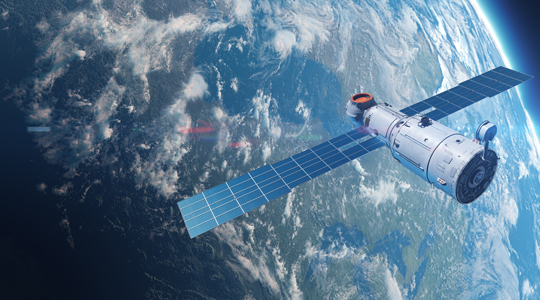
Constellations spoke with Steve Good, Chief Commercial Officer at Ramon.Space, a company focused on advancing onboard processing in space. How quickly that becomes mainstream is dependent on four factors: availability of onboard power and storage, the evolution of software-defined satellites, demand for local data and smart satellites.
Big Data Needs Big Storage and Power
Good explained that “big data is not getting smaller…big data is getting bigger.” Extracting big insights from big data requires increasing onboard processing and storage.
“You do three things with data,” said Good, “you process it, store it and move it. And you need to do that gracefully and harmoniously, otherwise, you’re going to be limited in some form and not be able to maximize the functionality of spacecraft.”
Good explained that “satellites still have a finite amount of power, so we need to really manage that power budget. Earth-like computing can be done within a limited set of walls, if you will, but you still want to draw the minimal amount of power for those apps.” Like storage, power is a constrained resource on satellites, and both need to increase to go beyond LEO and GEO.
Software-Defined Satellites Enable Decision-Making in Space
“There’s a big fear in this industry,” said Good, “that once a satellite is launched it’s obsolete immediately. But now, with the ability to reprogram, the ability to upload new AI, machine learning apps, the ability to store data, or provide data centers in space, increases the ability to make decisions in space.” As an example, Good cited collision avoidance in an increasingly crowded space environment. AI and machine learning provide the “ability to understand where you are, where other things are, where your sibling satellites within your constellation are [and] can give you the ability to predict what future maneuvers you might need to make.”
There’s limited storage on traditional satellites, resulting in a lot of bent-pipe connectivity in the GEO space. In the LEO space, often the entire data sensor data is stored and then forwarded over the teleport whenever those satellites are in range. But, says Good, that is changing as software-defined satellites can dynamically allocate the spacecraft’s finite amount of power to when and where that resource is most needed. “That’s where the software-defined satellites are taking us,” he said.
Be It Jupiter or Earth, Data Needs to Be Local
As civil space exploration programs are taking spacecraft farther out into the universe, it becomes more difficult to rely on Earth stations for data processing. As Good put it: “We’re on our way to Jupiter. It’s going to take eight years to get there, but we’re going to look at the ice moons of Jupiter and find out what’s there. We’re going to the sun to see what the future holds for us.” Those are very difficult and very distant environments; one can’t simply fly there and fix things. “We’re enabling all kinds of AI, machine learning, data centers in space, storing data in different areas,” he continued, “because the data needs to be local, you don’t want to have to access data here on the Earth.”
In the same vein, Good said, “You go to the space station folks, the people who are going into deep space, one of the challenges is, how do they take care of our people in space?”
Smart Satellites Need Smart Ground Systems
Descending to Earth, Good was adamant that smart satellites need smart ground systems. He explained, “It’s very important that the [satellite] processors have the same protocols as the ground equipment. So, we, as an industry, need to work together, if we’re really going to route in space and have cloud computing, to make sure that we’re using the protocols of choice, the ones that make sense.”
“The ability to work across the ecosystem is key. Everything from ground equipment to terrestrial tier one connections, the internet, antennas, RF, the radio folks, and we, in the onboard processing space, all need to work together.”
To hear more about SOTS and COTS, onboard computing in deep space and what we can learn in space, click here.
